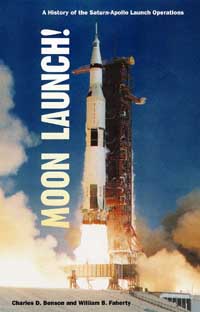Everyone these days has their own list of moonshots – inspired by the description by the Greater Memphis Chamber’s Chairman’s Circle of its own priorities – and we’re no different.
In truth, what we call moonshots might be called business as usual or priorities for 1995 in many cities. For that reason, we apologize in advance if our list of moonshots sounds more like building the launching pad for a moonshot.
Regardless, it’s time that Memphis elevated its thinking and if that requires us to get the basics right, let’s do it now and really get to game-changing strategies that can improve the Memphis trajectory for the future.
In our previous post, we wrote our rules for the new year. They were:
1) Resist the temptation to treat anecdotes as data.
2) Let’s create a story for Memphis that resonates with all of us.
3) Shake the Nashville obsession.
4) Be intolerant about us versus them rhetoric.
5) Quit chasing magic answers.
6) Create balanced strategies for the future.
From where we sit, the following are the priorities for Memphis that need to be addressed:
1) Create a downtown known for its vibrancy. We were having lunch recently with someone who moved here after living in several other cities. His question about downtown: Where are all the people? We smiled and replied: Haven’t you heard yet that we’re in the midst of a downtown renaissance? We laughed and talked about what it takes for a downtown to be really vibrant and successful.
It would be a sign of our civic maturity if – when it comes to downtown and many other issues – someone in a leadership position would simply tell it like it is. A few years ago, a national columnist revisited Memphis after an absence of 10 years or so, and he said: “Downtown Memphis is in real trouble, and I’m not sure it’s going to make it.” That’s why we begin by being honest about the challenge and the sense of urgency to address it. We owe it to ourselves.
Back to downtown, it is the classic example of what we have said often: we too often define success by comparing Memphis to itself rather than to other cities. Because of it, we think downtown is going through a renaissance when compared to 10 years ago, but the real question is what downtown looks like when it is compared to other similar cities.
We have pockets of vibrancy but they are few and far between. Make no mistake about it, if you want to know how to decide if a downtown is successful, it is vibrancy. That, more than anything else, should be the goal of everything under way downtown.
2) Mitigate the devastating effects of sprawl. The tragedy of the unsustainable sprawl of Shelby County is that it is precisely the result of our own local government policies. Shelby County Government bears most of the blame, reliably coughing up more and more money and almost quadrupling its debt to build more and more roads and schools. In a sentence, Memphians, who were paying 75% of county government’s bills, were required to subsidize their own neighborhoods’ decline.
But less known is the complicity of Memphis City Council. Zoning laws gave Council members extraterritorial jurisdiction which means they had a vote on zoning and land use decisions three and five miles outside the borders of Memphis. As a result, City Council had the ability to shape the future of unincorporated Shelby County, but instead, it wielded a rubber stamp on every project because its members were also under the influence of developers. They also assumed that through annexation, Memphis would ultimately take in the area and gather up new property taxes.
As we’ve seen, this annexation policy was fool’s gold, because the short-term infusion of more taxes was outpaced by the costs of services, which were more expensive because they had to be delivered over greater distances. There is general consensus on City Council these days that blind loyalty to annexation amounted to poor public policy, which makes its determination to annex the Windyke area all the more puzzling.
Today, while Memphis is at the bottom of most economic indicators, it is at the top of the list of communities with the worst sprawl. One begets the other more than we often seem able to realize. These days, we seem to accept sprawl as a fact of life, but there are still public policies that can mitigate its effects, but they require us to understand the price that we are paying for this unsustainable growth.
3) Develop a balanced economic development plan. Today’s economic development plans continue to put Memphis in position long-term to compete against Mexico rather than American cities that are succeeding by concentrating on the knowledge economy. In the past year, Memphis has added manufacturing jobs that barely pay living wages but meanwhile, we lost as many jobs at FedEx.
We celebrate call center jobs that are located so far east that urban workers can’t get to them. It seems only logical that if the governor is going to swoop in to Memphis – and this goes for anybody else announcing jobs – to announce a bunch of $9 an hour call center jobs that the first box to check is whether Memphians who need these jobs the most can even get to them. On average, it takes one hour and a half for inner city workers to get to most job centers in our region. And while the political attention now falls on connecting workers to the call center jobs, it’s worth remembering that there’s no bus service to Electrolux either.
There is a strange culture that has grown up around economic development in Memphis and Shelby County, one based on anecdote and vested interests telling us how essential tax freezes are, even as $100 million in city and county taxes are waived every year to corporations. Nobody here is saying we should do away with the PILOT program, but we are saying that it needs to be used sparingly, it should have targets, and it should quit overpaying for the jobs it’s getting.
More to the point, we shouldn’t rely on the people who benefit from PILOTs to tell us how indispensable they are. It’s become de rigueur here to say that we have to give away taxes because we are a border city with Mississippi. And yet, just about one-third of the largest MSAs in the U.S. are just like ours – they are multi-state – and no other city approves as many tax freezes as we do.
4) Become a hub of African-American talent. Atlanta built its economic juggernaut while soaking up most African-American talent in the Southeast, and it prides itself on being a hub of African-American talent. Competitive advantage is built on differentiation, and what makes this entire region – the first majority African-American MSA with more than one million people – different is our wealth of African-American talent.
We should embrace what makes us different, because when we don’t, we play into the hands of those who assume that a majority African-American region cannot succeed. That’s why the smartest thing we can do is to walk toward, rather than deny, facts perceived as problems by others. We’re not saying that we shouldn’t be scratching and clawing for any talent that we can get, whatever color, but the fact remains: we have a significant bulge in children when compared to the largest 51 MSAs – and the majority of these kids are black. This bulge can be an economic plus, but first, we have to begin to treat them as assets rather than problems and do whatever it takes to convert the students in our classrooms today into the talent that becomes our competitive advantage tomorrow for jobs of the knowledge economy.
Finally, minority business development has to be treated as more than social work. Too often, companies helping minority entrepreneurs act like it’s just a good deed rather than a critical investment in economic success. Despite decades of talk about the importance of minority businesses, these businesses remain largely in low-growth and no-growth sectors and rely on personal debt and family financing rather than loans, equity, and other tools. Because of it, the businesses lack the number, size, and capabilities of their white-owned counterparts. If we had more African-American businesses, they would accomplish so many of our economic objectives for Memphis, including accelerated jobs growth, rebuilding urban neighborhoods, expanding local tax bases, creating more customers and putting more money in everyone’s cash registers.
5) Get serious about a plan and planning. So much that is done in Memphis is a shot in the dark because we have no real plan that guides decisions or articulates our aspirations for the future. Most planners in other cities are incredulous when told that we have not had a comprehensive plan for 30 years. That said, we don’t need a traditional comprehensive plan but more of a strategic framework that shows the forces shaping Memphis and how they can interrelate in ways that propel the city ahead.
Even more incredulous to planners in other cities is the fact that city and county governments have decimated our planning functions and refused to support the new Unified Development Code with the staff needed to enforce it. It is next to impossible to find a city our size with as few planners as we have and the impact of this lack of commitment to real planning.
6) Implement the Jeff Speck Recommendations. Nationally-known planner, architectural designer, author, and New Urbanist co-creator Jeff Speck laid out six simple ideas for the Memphis riverfront that could transform it. His 74-page report appeared to have found the sweet spot for short-term actions that don’t cost much and could bring more activity, more people, and more vitality to downtown. He began his work with a fundamental premise: “The central indicator of success for a city is street life,” he said, as he explained the context for city government’s work. His six short-term ideas for the riverfront: make Riverside Drive a complete street, make Bass Pro Drive a complete street, remake Jefferson Davis Park, complete the central Riverwalk, and improve Tom Lee Park.
7) Get intentional about development of elected leadership. This one needs no explanation, because we’re sure you’re already discussing it. Memphis has to attract younger, innovative leaders into the political system. Today, our political process repels many people from getting involved, much less run for office, and there is an entire sub-strata of young, smart young people who are passionate about the future of Memphis but have nothing but disdain for politics here. We have to find a way to get them engaged because Memphis’ future hinges on attracting a new generation of leadership.
8) Make University of Memphis nationally significant. The single largest pipeline for talent in Memphis is our state university, but its role and potential too rarely come up in discussions about the future of Memphis. All of us who care about the future of our city should also care about the future of U of M, no matter what our alma maters. As we look for strategies to expand and improve our economy, it’s imperative that we make it a priority to move Memphis’ higher education anchor up that list – and up the list of the top U.S. universities.






As much as I agree with this list; the question remains…. under whose leadership can we attain these goals?
The recent headlines in the CA summing up the State of the City address promised an additional bus route. Yes, that was the headline.
When Southwest added one additional daily flight to Baltimore it made front-page news. Not a new city just an added flight frequency.
When the bar is set this low who or how do we get our city leaders to think boldly , take risks and move us forward.
Without a citizen based organization applying civic pressure and taking risks – that means “speaking truth to power” as the old saying goes.
Getting involved in local politics, applying pressure and lobbing around a set list of deliverables.
The elected members of the City Council are often elected with a very small turnout. It is possible to change the roster of elected officials.
But how?
Is Downtown stagnant?
The last major building – which was only 21 floors – was built in 1985.
Thirty years. Ouch.
So ummm yeah its a tad Mayberry RFD.
BS, actually you are full of BS. Check your facts and come again. Thanks for playing.
To the troll bs, the last main building built downtown holds 18,000 people and has been a huge success. Thank God the powers that be didn’t listen to the ignorants like you that tried to stop it.
Agree totally w/this list. You guys should fwd it right over to the Mayor’s office. ….as for as Anon’s comments on buildings, downtown could definitely use 1-2 “newer” buildings.